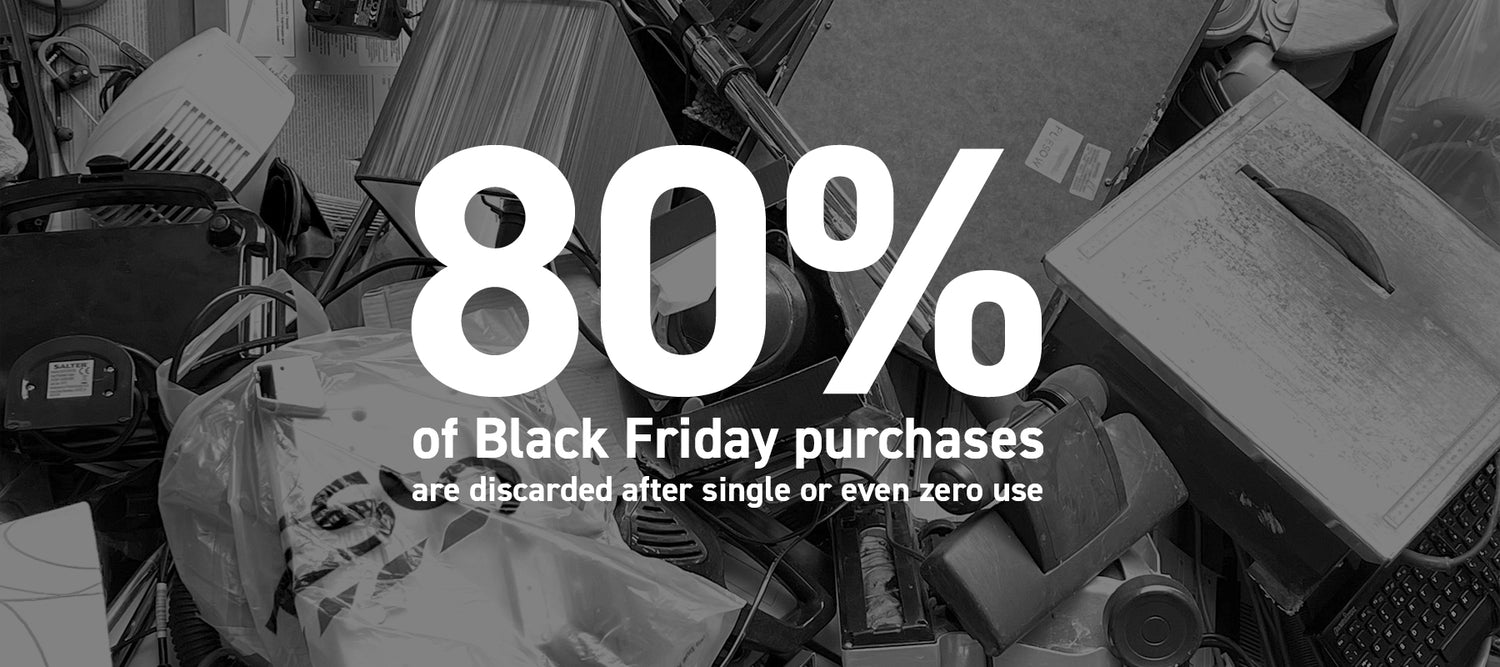Black Friday is becoming a more massive consumer extravaganza every year, by expanding from a single day or weekend to a full-week marketing campaign. Several newsletters recite the discounts already in advance as special early bird offers.
In 2018, measured by the number of purchases, Black Friday exceeded the average Friday by 225 percent, and measured by the sum of purchases, Black Friday exceeded the average Friday by 280 percent. It is estimated that up to 80% of Black Friday purchases are thrown away after just one or zero uses, and the average consumption sum is hundreds of euros per person. Since excessive consumption is one of the reasons why the climate crisis is escalating, huge campaign days such as Black Friday only keep adding to the amount of waste generated on a yearly basis.
Distorted reality
The trick with Black Friday is that it is mostly distorted, since high discount percentages can also be created by gimmicks: the price of the product is first raised and then lowered around the discount date, making it seem like the consumer is making a huge deal buying something for the sake of the discount.
Exaggerated discounts make it impossible for small local companies to compete with the prizing, as well. They can weaken the local workforce and market position, especially during Christmas, when many stores make their biggest sales on an annual basis.
If consumers just rush after discounts and focus more on quantity than quality, many smaller ones will go unnoticed. And people are left with poor quality stuff in large quantities instead of having something durable, high quality and genuinely relevant in their hands.
It's not like we don’t know how to appreciate great discounts or take advantage of them ourselves. What we’re saying is that there are some things to remember when adding stuff to the shopping cart.
Things to consider when shopping
First of all, the most important thing is to buy only when needed. If you can find something you’ve been looking for with a good discount, great! That’ll make it feel all the more better. But buying something just because it’s supposedly 20%, 50% or even 70% off doesn’t really make any sense. When things are bought without actual need or purpose, they’re usually just left lying around. Shirts forgotten in the closet with tags still on or tech devices tried a few times and then forgotten.
Secondly, think twice before you buy and avoid buying on credit or installment. Also do compare if the discount is really good or better than elsewhere at standard price. At this point, you can really make value choices. Choose the same product at the standard price from a local entrepreneur and at the same time support the small local companies and stores. It may seem more pricey at the moment, but in the long run it will benefit everyone. It gives support to local businesses and keeps the local economy prosperous. At the same time, it will increase opportunities for small businesses and improve the selection available. Like how you can find a wonderfully unique selection in small brick-and-mortar shops, for example, compared to the mass selection of chain stores?
Opting for green rather than black
Our approach to consumerism is different, because we want to invest in longevity and repairability of our products. Usually electric devices are designed to work for a certain period of time, after which a new one needs to be bought. The old device is simply thrown away, and smaller devices such as power strips might not even be properly recycled.
All in all power strips are suitable for recycling, but the way they’re designed and assembled does not make it possible to reuse any part of them. MyNolla Strips are designed to be repaired and recycled, which is why we’ve designed them to be disassembled. They can be assembled and disassembled, repaired and recycled unlike regular power strips that need to be broken to remove various parts.
The development we’re hoping to see and where we take part in is that of green development. Green consumerism. Basing our decision on sustainable development and working on creating better options to choose from. Being transparent and open about our decisions and dilemmas creates discussion and hopefully helps in creating more sustainable options in the future, as well.
As consumers, we make all the decisions. What to buy and where from. Whether we support huge discount campaigns and enjoy spending just for the sake of it, or to stop and think about what we buy and why. By making these decisions, we create demand and at the same time require companies to meet it. It is really up to us what kind of stuff is sold and produced. By demanding sustainable, durable and high-quality products, we can do our part in getting more and more green options available.
Sources:
@ecocart.io
